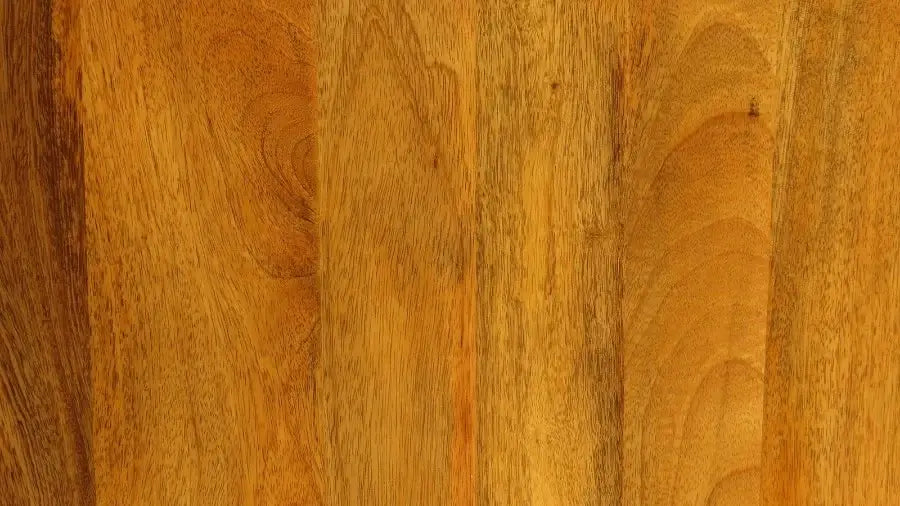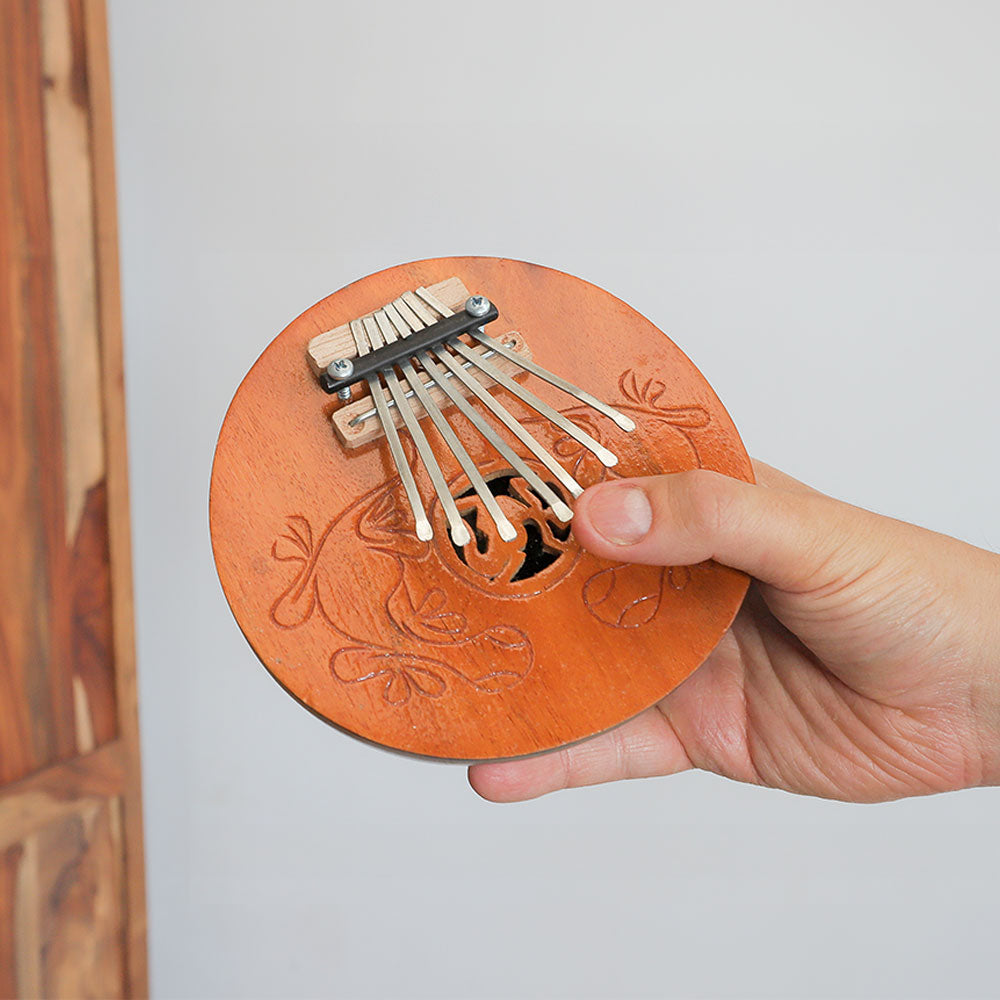We love mangos, and mango wood, it's strong, durable and is highly water-resistant. Cheaper to buy compared to other hardwoods such as oak and teak. It comes from the tree Mangifera indica, or more commonly known as mango.
It’s a species of flowering plant in the same family as sumac and poison ivy, there are hundreds of varieties that have been introduced to other warm regions of the world. Due to there being many varieties of mango, over 100 in fact, the colour of the wood can vary with streaks of pink, black, yellow and golden brown.
Is mango wood suitable for outdoor use?

The structure of mango wood naturally repels water which makes it a great choice for outdoor furniture. It is very durable and is highly water resistant but not as much as teak. If the furniture is going to be used as permanent outdoor furniture it should be treated to prevent insect and fungus damage. Before putting your mango wood furniture outside you should check to make sure that it is 100% solid mango wood and that it has been treated.
How to care for mango wood?
Whilst mango wood is water-resistant it is still not recommended to clean it by applying water to its surface. Instead you should wipe it with a slightly damp or dry clean cloth. if the mango wood has an oil and wax finish or a stain and wax finish it should be oiled twice a year. This will help to protect the wood and make it more water repellent. Oils have the ability to penetrate the wood, nourishing it and maintaining it's natural oils whilst also enhancing its natural grain. Depending on the finish you may also want to polish it to make it appear shiny.
Is mango a hardwood?

The short answer is that yes mango wood is a hardwood similar to oak, it is also sturdy and hard wearing.
What are the pros and cons of mango wood?
Put simply there are four main pros of mango wood these are the fact that it is water resistant, as it is easy to work with it can be made into many designs and is a popular wood for carving. Another great thing about mango wood is that it is one of the most sustainable wood options due to the tree being grown for its fruit, finally it is a stunning wood that is a lot more affordable than woods that look similar.
The cons of mango wood is that without it being treated it is prone to fungus and insect attacks. Luckily, all of our large solid mango wood furniture has been treated to prevent this from happening. Another con is that during dry weather the wood may become dehydrated especially if exposed to heat sources or the sun which is why it is recommended to oil it regularly if it becomes specifically dry.
What is the most expensive mango?

Surprisingly there are some rare types of mango throughout Japan, these are said to be the most expensive mangos in the world. The fruits are known as 'the egg of the sun'. Part of this could be because they do not harvest the tropical fruit as others do.
Instead of a traditional harvest, they allow the fruits to become fully ripe by placing a net underneath to catch them when they fall from the tree. This allows for the sweetest mango. They are classified as a premium fruit and can fetch 13,000 Yen per mango (£90.15 GBP) with even higher-end fruits costing (£2762 GBP). Despite the high price tag of this delicacy. The Alphonso variety from India is known as the king of mangos because of their sweetness.
Can you grow a mango tree in the UK?

Whilst being very popular it is also susceptible to fungal and insect attack. It’s not too difficult to grow your very own mango tree, my tree has been growing in a pot for just over 1 year and is still quite small, most likely because I am growing it in the UK, and it is not a very warm climate here.
None the less, it makes a beautiful houseplant with fresh green foliage and who knows maybe one day I will be able to pick my own mangos! From seed to fruit it usually takes between 5 and 8 years if it has not been grafted.
How to clean and care for Mango Wood?
Simple care can be achieved by using a natural beeswax polish, this will also help provide some protection from scratches. When it comes to cleaning Mango Wood you shouldn't use any water directly on it. Instead you should wipe it down with a slightly damp cloth or a dry dust cloth.
What oils can you use on Mango Wood?
You can treat your mango wood with natural oils that you have on hand at home. Olive oil, peanut oil, lemon oil and walnut oil are all common, and are cheap treatments that keep wood fresh and moist thus preventing them from drying out.
Is Mango Wood toxic?
When working with any wood you should always wear protective gloves, and wear a mask, this is because the dust can irritate our lungs, and some dust, especially from hardwoods, are toxic.
Although reactions are unlikely, when working with mango wood it has been known to cause skin irritation. If using tools, you should always stick to the manufacturer's instructions and wear protective eyewear.
Why are mango wood products a different colour?
Mango wood in its natural state can, of course, vary slightly due to other species of the plant. However, one of the main varying reasons for the colour to vary so much is because of the finish.
Natural Finish
This is an image of how mango wood looks after the bark has been removed and the wood has been sanded.

Wood Stained Finish
After the wood has been sealed with a finish or wood stain, and other polishing processing it then becomes significantly darker. With the contrast adjusted, this is when we can truly appreciate its natural characteristics. The reason that some are lighter and some are darker purely depends on the wood stain product used.

Is mango wood expensive?
Mango wood furniture is as durable as other strong expensive woods like oak, it is just as beautiful but it's a lot more affordable. Solid furniture is usually on the expensive side and mango wood is no exception. High quality furniture is costly but solid pieces if cared for correctly can last a lifetime.
Why is mango wood sustainable?
It is extremely sustainable which is great for the environment, this is because once the tree stops producing its sweet delicious fruit, instead of just being cut down and thrown away to restart the process it is made into beautiful pieces of furniture, it can be made into all types of furniture because it is so versatile. The trees are grown around Asia, with most of the timber being from India.
Where can you buy Mango Wood products?

We have been busy sourcing the most beautiful mango wood products just for you. Discover our full range of sustainable mango wood furniture, kitchenwares, candle holders, ornaments, music instruments and more. You will love what you see. Want to see some beautiful mango wood products?








5 comments
Alex
Hi, thanks for all the really helpful info on mango wood. My question is will sawn seasoned mango wood- which looks quite yellowish- turn morn greyish brown with time? I’m making a banister to match some furniture but it looks very different and it’ll be treated with a hard wax oil. Any help would be greatly appreciated thank you 🙏🏻
Robert
What’s the best oil or sealer for mango wood outdoor shutters ?
Ryan Bomzer
@Sonali
To take care of mango wood furniture you should oil it every 6 months, the same goes for most wooden furniture and this will prevent it from cracking over time. Mango wood cupboards would be lovely and I would love to see a photo, feel free to tag us on instagram @Carved_Culture_
Sonali
How does one take care of Carved Mango wood furniture. How to prevent it from developing cracks. Would it be wise to go for Mango wood cupboard that has a mesh-like structure for the doors.
Moonwit
This article has a lot of valuable information. Great work. Thank you for sharing this with us.